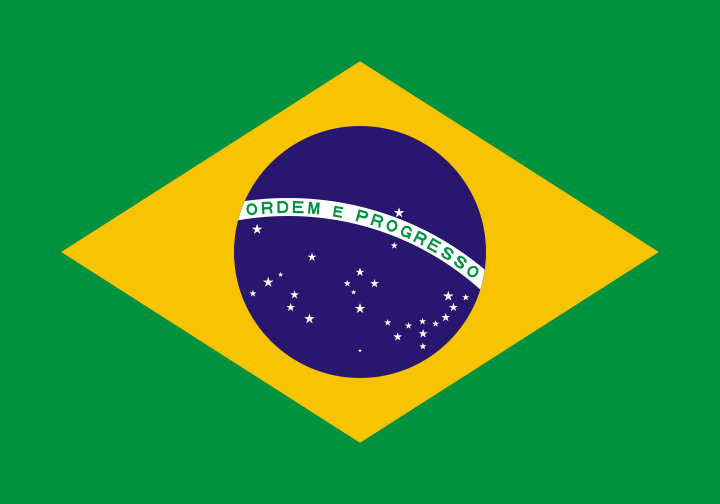Film for Vulcanization
Vulcanization is a chemical process invented by Charles Goodyear in the first half of the nineteenth century. The inventor wanted to find a use for natural rubber that is obtained by engraving the bark of the rubber tree and collecting the latex that comes out of it. This raw material was of little practical use, because it is sticky and easily deformed (it is very soft and ductile).
After numerous chemical experiments, Goodyear realized that by adding small amounts of sulfur to the latex of the rubber tree (natural rubber) and subjecting it to a cooking cycle, the rubber hardened permanently and took on elastic characteristics.
Vulcanization is a Thermosetting Process
This is a thermosetting reaction, that is to say a process that permanently transforms the physical state of matter by exposure to heat, in particular it transforms the substance from a viscous to a solid state. Furthermore, unlike thermoplastics (in which the solid-fluid state transition cycle is reversible and can be repeated numerous times), in thermosetting processes the transformation is generally irreversible.
Since then, the basic procedure has remained essentially unchanged. Progress has introduced numerous chemical substances generically called elastomers, natural or synthetic in support and / or in replacement of natural rubber latex (the variants of raw material used today are numerous, we mention only the best known: polyisoprene – natural rubber, polychloroprene – neoprene, styrene butadiene rubber – SBR, silicone based rubbers, polyurethane rubbers), chemical catalysts have multiplied (sulfur, nitrogen peroxide, acetosilane, urethane crosslinkers, metal oxides), accelerators and retardants have been invented and much more. In any case, even today the temperature and the presence of suitable chemical catalysts transform the raw rubber and make it permanently solid.
Raw Rubber and Vulcanized Rubber
Therefore rubber can be found in two different forms: raw rubber, a substance not usually known to most people, and cooked or vulcanized rubber, which is instead in the everyday life of all human beings.
After the extrusion, raw rubber appears as a substance similar to chewing gum, very mellow and ductile, hot and sticky. With vulcanization it hardens, becomes elastic and does not degrade over time. In other words, vulcanization considerably improves the mechanical properties, in particular it improves the tensile strength and increases elasticity.
The Use of Plastic Film in Vulcanization
The first step to carry out the vulcanization is the preparation of the compound, which consists in mixing the raw rubber and the catalyst in proper proportions.
To transform it into the form we usually know, it must then be “cooked”, that is, subjected to vulcanization. In all thermosetting processes it is necessary that the raw material, which is originally in a viscous state, and therefore with an unstable shape and volume, during the process is contained within special molds or shapes. This is essentially for three reasons:
- in the first place it is possible that the viscous material during the cooking cycle, before permanently hardening, goes through a phase in which its fluidity increases (it becomes much more liquid than the initial state). At this time, if it is not contained within a mold, it can come out and finish hardening in a different point of the oven (wherever it wants, not where it is necessary);
- secondly because the mold already gives the product a shape very close to what will then be the final shape of the finished product. This is the case, for example, with tires, gaskets, O-rings and more;
- finally, because the use of molds allows to considerably reduce the use of the raw material, especially if the shape has considerable vacuum volumes (for example, one could think of obtaining a tire or a gasket starting from a solid body, but this would involve the use of much more raw material and very long mechanical processes).
During the process it is therefore necessary to confine the raw material inside suitable containers. Depending on the shape that must be given to the final product, a series of molds or other means are used that contain the raw rubber to be vulcanized. Here, too, the possibilities are very numerous. For some items, one or more molds are used (very frequent is the use of mold and counter mold, also called male and female mold). In other cases, an internal (male) mold is used and the external containment is made in other ways, the most common, practical and economical is to make an external bandage with a flexible tape. In still others, the mold is external (female) and a suitably inflated flexible bag is introduced inside.
Our Films for Vulcanization
Our films for vulcanization come at this point in history, and can be divided into 4 families:
- in the gum covering of rollers or cylinders, to carry out the external banding (manually or with a machine) with the roto-translation system, film reels with a rather limited width (from 5 to 20 centimeters) are used. The film essentially serve to give compaction to the various layers of rubber during vulcanization;
- for the production of rubber in flat sheet (rubber sheet in rolls or sheets, conveyor belts, rolls of fabric coupled with rubber) film in reels or sheets is used, which mainly serves as a separator between the various layers of rubber;
- reel film is used for the production of rubber molds, which require a particularly smooth and shiny surface;
- in the retreading of tires micro-perforated film reels are used.
Our entry into the vulcanization industry dates back to 1996. At that time we have been contacted by a leading Italian company active in vulcanization and together we developed a specific film, designed according to their needs. Since then we have been supplying manufacturers of rubber coated rollers.
Our proposal for this technological application is a specifically designed film: PP AM for Vulcanization, which has an excellent behavior in the rubberizing of the cylinders.
This film outcomes the weak points of traditional polypropylene and nylon films. Unlike traditional polypropylene films, it has the feature, during the rubber curing cycle, to shrink at a rate similar to that of heat-shrinking vulcanized articles. It does not tear or split during the vulcanization process, a very common defect of single-layer nylon films, which is found especially in the presence of steam or at higher temperatures (150 ° C).
In addition, it is cheaper than two-layer laminated nylon films, and does not infringe any existing patents.
This film has gradually replaced a patented film proposed by a very important multinational company. Nowadays, PP AM for Vulcanization is sold in many countries, and is commonly used in the rubber coating of rollers.
Afterwards another film dedicated to the vulcanization industry was introduced to the market. Polypropylene Superplanare for Vulcanization is a film specifically designed for the production of rubber sheets (rubber sheet and conveyor belts). It has limited shrinkage and can therefore be used in the immediate proximity of the extruder, at medium temperatures. It acts as a release film and as a separator of the various layers of rubber, in particular where the sheet is collected in a reel.
In 2015 we then entered the tire retreading sector. In one phase of the processing a micro-perforated film is used, in reels of medium height (35 centimeters). Our proposal for this application is Micro-Perforated Polypropylene Deformabile for Tire Retreading, which is a particular film with a high temperature resistance (up to 150 ° C).
All our films for vulcanization are made to company specifications, with a precise recipe as regards the raw materials used, and particular transformation processes of the films that determine the mechanical resistance, the temperature resistance and the other physical characteristics of the film.
For any information on vulcanization films, pOur technical department is at your disposal you may need for any explanation, in-depth analysis, tests, new product or application development both for films and for vulcanization processes.lease contact us.
In this page you can find some of the films included in our special price list for vulcanization.
The list is not complete. For various reasons other films have not been included in the price list yet. So if you have a particular query concerning film for vulcanization we suggest you to contact us, and maybe we have already what you are looking for.
For further infomations write, phone, send an email at:
A. Peruzza srl – via Portelle 1 – 31010 Mareno di Piave – Tv – Italia
Telefono: (int+ 39) 0438 492335. Telefax: (int+ 39) 0438 492365
Email: info@aperuzza.com
© 2015-2022 A.Peruzza S.r.l. is the sole owner or authorised user of the intellectual property rights relating to the information communicated herein. It is forbidden to copy, include in websites, distribute or anyhow publicize this document to third parties without prior written permission of the owner.


























